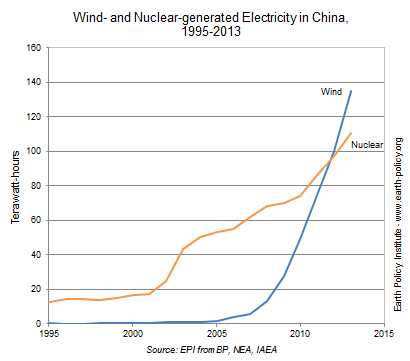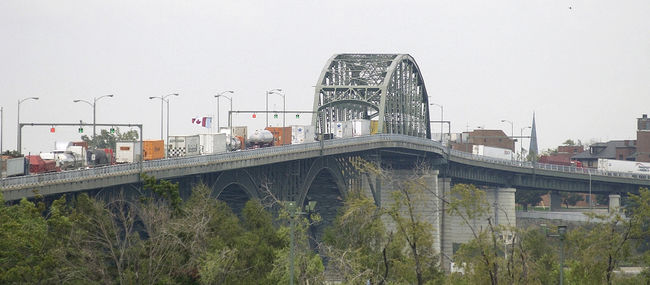Nuclear Power
On Monday (Nuclear Newsreel, March 3, 2014) we admitted we had no idea how China could say that two new Westinghouse AP 1000 reactors it plans to build would cost only about $2.5 billion each; after all, current cost estimates for the two reactors of the same design being built at the Vogtle site in Georgia are about $8 billion each. That’s a big difference and can’t simply be attributed to lower labor wages.
That sparked the interest of Doug Koplow at EarthTrack.net, who has been examining energy subsidies–especially hidden ones–for years. In a post on his site today, he explains that direct government ownership of the project coupled with China’s lack of transparency enable the government to hide many indirect costs that U.S. companies cannot: “It is likely that somewhere in China, somebody knows how much money has been fronted by the government to each part of their nuclear infrastructure. One should not expect that analysis ever to see the light of day, however.”
His piece also has a warning for the U.S. nuclear industry:
“The US nuclear industry likes to point to Asian costs as the “real” economics of nuclear builds. They frequently blame nuclear opponents for their economic troubles, arguing that irrational opposition drives up costs by elevating safety standards and plant delays unnecessarily. If only they could just get on with their work, the argument goes, new reactors would be very inexpensive even in the United States.
Such arguments are actually unhelpful, even to the industry itself. They deflect attention from real structural problems in the way they operate and manage risk, and the sooner they fix those problems, the sooner they have a chance of a competitive market offering without the coddling hand of government.”
The bottom line is that Chinese cost announcements have to be taken with several grains of salt, while U.S. nuclear boosters need to get over the idea that nuclear reactors can be built at the prices China claims. The reality is: they can’t.

Meanwhile, the Earth Policy Institute reports that wind power overtook nuclear power in Chinese generating capacity in 2012 and has widened its lead since. Wind now provides 91 GW of capacity in China–more than any other country in the world. And wind is expected to continue its rapid growth there: China is now building the world’s largest ultra-high-voltage transmission system which will enable it to add more wind power; last year wind power had to be curtailed because of lack of transmission capacity.
The California Public Utilities Commission (CPUC) has told Pacific Gas & Electric (PG&E) that it must address eleven separate issues before it can re-apply to use ratepayer money to seek a 20-year extension of the operating licenses for its two Diablo Canyon reactors. The issues aren’t just niggling little details either. They include the site’s seismic vulnerability, high-level radioactive waste storage and upgrading its once-through cooling system to limit the severe damage to animal and marine life the plant has been causing to the California coast.
The discovery a few years ago of the Shoreline fault near Diablo Canyon has shaken things; while PG&E has tried to downplay the significance of the faultline, it has yet to convince anyone that the reactors could withstand an earthquake the fault could conceivably deliver. As for the waste, despite the installation so far of 23 dry cask storage units, the reactors’ fuel pools remain overstuffed–holding about four times as much high-level waste as their original design basis allows.
Addressing the once-through cooling system will most likely require construction of cooling towers. One estimate of the cost of such a project is $12 Billion. But many believe that estimate is a deliberate “highball” figure–one designed to ensure the CPUC will not require cooling towers because the expense would be ludicrous. Indeed, cooling towers proposed for other once-through cooling sites, such as Indian Point in New York, have not come with cost estimates anywhere near that high. Under CPUC rules, the commission can exempt PG&E from the requirement to fix the problem if the costs are prohibitive–as $12 Billion cooling towers certainly would be (unless, perhaps, if they’re gold-plated). But towers that cost what they should cost–in the low billions–probably would still make license extension of Diablo Canyon uneconomical even if they couldn’t be considered prohibitive. And that’s what PG&E is afraid of.
Next week, the Bulletin of Atomic Scientists will publish in book form an updated and expanded version of the Independent Investigation Commission on the Fukushima Daiichi Nuclear Accident. That Commission found that human factors played as large a role in the Fukushima disaster as did the initiating earthquake and tsunami and warned that these lessons have still not been learned.
As Dr. Yoichi Funabashi, chairman, Rebuild Japan Initiative Foundation and report co-author, put it: “Three years after March 11, 2011, this crisis has not ended, because of the unsolved issue of the contaminated water and the fact that there has been little change in the human side of the equation: the whole system of Japan’s governance and leadership on nuclear matters. Putting aside the question of the issues with nuclear technology, the human factor that led up to the Fukushima crisis must remain a major concern. We need to learn the Fukushima lessons more seriously in pursuing a new way of decision-making, a new way of crisis management, a new form of governance and leadership. Otherwise, we run the risk of an even more disastrous situation in which Japan would have gained little in terms of wisdom from the Fukushima experience.”
The book, titled The Fukushima Daiichi Nuclear Power Station Disaster: Investigating the Myth and Reality, identifies “lack of unified and independent regulatory controls,” “faulty management oversight,” and “false sense of infallible technology” as critical issues contributing to the disaster and that remain essentially unaddressed.

Canadian officials say no high-level liquid radioactive waste has yet been transported from Canada into the U.S., where it is supposed to end up at South Carolina’s Savannah River Site (Nuclear Newsreel, February 24, 2014). And officials add that they don’t intend to tell anyone if and they do make such shipments. Security, you know. New York State officials have been rather meek in their response; one said it would be nice to know about the shipments, even if the notification occurred after they had already been completed: “We do want to know, in general terms, what the potential is so we can plan for and deal with the potential (emergencies).” Seem to us that it would be easier to plan for potential emergencies if one knew when they might occur…The NRC says it has not yet certified the liquid high-level waste shipment, although it did last year certify a solid high-level waste shipment that apparently has also not yet taken place.
Clean Energy
This could be big: AES Corporation announced today that it will begin selling power plant sized batteries. The batteries range as large as 500 MW–about the size of a typical natural gas plant–and AES says they’ll be even cheaper per kilowatt than a gas plant. They can supply power for four hours, and are a useful backup not only for peaking power plants, which are typically natural gas fired, but also for solar and wind power systems. Those would feed power into the batteries when they’re operating at full capacity and then draw the power out as needed. So, on a typical summer day, solar systems would provide power until late evening, and then the backup batteries would continue to provide power until around midnight/one a.m. or so, when demand drops dramatically. While not quite a 24/7 solution for solar and wind, this could be–especially given the price tag–a dramatic step forward.
Yesterday we noted that the giant German utility RWE lost money on its power production for the first time since the founding of modern Germany in 1949. In this article on GreenTech, Stephen Lacey describes RWE’s situation as This Is What the Utility Death Spiral Looks Like and wonders whether U.S. utilities will learn from the experience in time or begin their own spiral into irrelevance.
The nuclear and fossil fuel interests just won’t acknowledge reality: in Kansas, conservative legislators are again preparing to attempt a repeal of the state’s modest Renewable Energy Standards. They required the state’s utilities to generate 10% of their power from renewables by 2011, rising to 15% by 2016 and 20% by 2020, and have led to a surge of wind power in the state. Backing the conservative legislative faction is the far-right American Legislative Exchange Council (ALEC) along with the Kansas Chamber of Commerce and Americans for Prosperity–one of the Koch Brothers’ political action front groups. Their Koch Industries is headquartered in Wichita, Kansas.
Interestingly, a spokesman against repeal is from a local chapter of the Chamber of Commerce, who says it helps attract jobs to the state, pointing as an example to a new Siemens Wind Energy plant that employs 330 people in Hutchinson, Kansas. According to a recent public opinion poll, 91% of Kansans support renewable energy and two-thirds of them would support increasing the standard even if it meant a couple extra dollars a month in their electric bill. With numbers like that, it’s not hard to see who the legislators seeking repeal are representing–and it’s clearly not their constituents.
Michael Mariotte
Permalink: https://www.nirs.org/2014/03/06/nuclear-newsreel-thursday-march-7-2014/
Comments are welcome! Say your piece above. Start a discussion. Don’t be shy; this blog is for you.
If you like GreenWorld, you can help us reach more people. Just use the icons below to “like” our posts and to share them on the various social networking sites you use. And if you don’t like GreenWorld, please let us know that too. Send an e-mail with your comments/complaints/compliments to nirs@nirs.org. Thank you!
Note: If you’d like to receive GreenWorld via e-mail daily, send your name and e-mail address to nirs@nirs.org and we’ll send you an invitation. Note that the invitation will come from a GreenWorld@wordpress.com address and not a nirs.org address, so watch for it.



